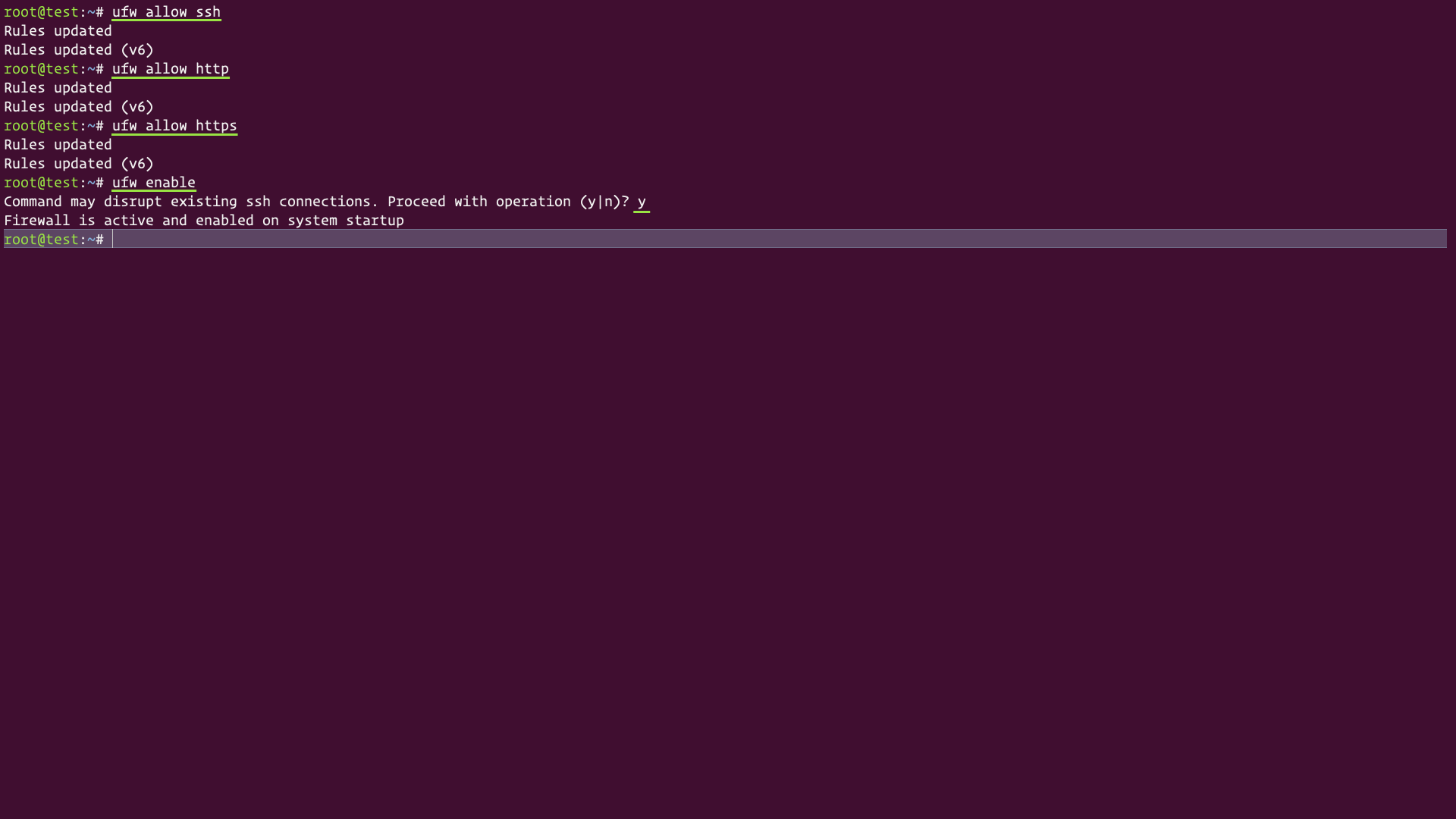Install Varnish 5 On Ubuntu 18.04
I already installed NGINX, PHP-FPM, MYSQL and Wordpress in Ubuntu 18.04. Also, I have Let's Encrypt SSL. Even i use Cloudflare CDN on the top of my domain. And to improve my site load performance even more, now i want to install Varnish on my NGINX. Feb 26, 2019 Install KDE Plasma 5.12 on Ubuntu 18.04 – Configure SDDM. Select the sddm as the default display manager which is the preferred display manager for the KDE Plasma Desktop environment and press Enter. Install KDE Plasma 5.12 on Ubuntu 18.04 –. Mar 20, 2019 Hey there!! In this video, I install WordPress 5.1.1 on Ubuntu 18.04. In order to install Wordpress locally on the Ubuntu system. You need to have Apache, My.
- Install Varnish 5 On Ubuntu 18.04 3
- Install Varnish 5 On Ubuntu 18.04 Windows 7
- Ubuntu 18.04 After The Install
Install Varnish 5 On Ubuntu 18.04 3
Table of Contents.IntroductionInstall Nginx on Ubuntu 16.04 and Ubuntu 18.04 are the same. There is not much different between this procedure.Now, let us go through the install nginx ubuntu process.What is Nginx?Nginx is the Web Server similar to Apache.
Nginx is more powerful and powers many high traffic website. It servers static content much faster than Apache. However both of them have their own advantage and benefits.Nginx can be downloaded from the Ubuntu repository.Looks like our task is more simplified.Now, let us look at the requirement and procedures. Install Nginx on Ubuntu Requirements:. You just need to setup your Ubuntu server as per this ubuntu server setupNow, let us see how to configure nginx ubuntu. Installing Nginx on Ubuntu 16.04First update the Ubuntu package manager using the below command. $ sudo apt install nginxIt will show you the packages and disk space requirement and accept and install.Now, all the required packages and Nginx will be installed on server.The next step in install nginx on ubuntu tutorial is to make sure firewall allows Nginx to function properly.
Firewall Configuration for NginxWhen you install Nginx, it will automatically register itself with UFW as a service.So, basically Nginx is allowed to work on the server without any problem.Now, Let us see how the list of services allowed by firewall. Use the below command for that. OpenSSHYou can see three profiles for the Nginx. Let me explain what are they.Nginx Full: This profile let’s the Nginx to allow the port 80 and port 443.
Here port 80 is unencrypted and the port 443 encrypted.Nginx HTTP: This profile only allows traffic on port 80 (unencrypted)Nginx HTTPS: This profile allows Nginx on port 443 (Encrypted)Now, only we are installing the Nginx on the server and we dont have any website so there is no need of SSL.So, we only need to allow http traffic. So, just allow that profile using the below command. $ sudo systemctl enable nginx5.
Install Varnish 5 On Ubuntu 18.04 Windows 7

Ubuntu 18.04 After The Install


Nginx Server Block Setup Configure Nginx UbuntuThe Nginx server blocks can be used to host multiple site on single server.Yes, it is possible to do that. All you have to do is make a small change in the Nginx configuration.We are not going in that as we focus on single domain setup. I am going to use the example.com here.But:You can use your own domain name there.Nginx always servers the content from /var/www/html/ directory by default.This setup is only suitable if you are hosting a single site.Here:We are going to create another directory for our domain example.com. It will be serve your domain content.Also, we will leave the /var/www/html to serve if no domain is matching in the nginx configuration.Execute the below command to create the directory.
$ sudo systemctl restart nginxNow, if you go to your IP address on your browser, you should see “Success! The example.com server block is working! Nginx Files and ExplanationsWhen you install Nginx for the first time, you will be confused with it’s file and directory names.For any changes, you have to directly work on those files. At that time, you will not know which directory has to be checked.Having basic knowledge about such directories and will help you understand the basic functionalities of Nginx. /var/www/html: This directory contains the content which is served on internet.
You can upload your website content here to served via the Nginx Server. By default, this directory will have the page which we saw earlier. /etc/nginx: This is Nginx configuration directory which contains the all the configuration file for Nginx. /etc/nginx/nginx.conf: this is main Nginx configuration file.
Whatever the changes you make here will reflect globally. /etc/nginx/sites-available/: This directory will contain the server blocks for websites.
But, this server blocks will not be used unless they are linked to sites-enabled directory. /etc/nginx/sites-enabled/: This directory contains the enabled server block linked from the sites-available directory. /etc/nginx/snippets: Configuration fragments are contained by this directory.
/var/log/nginx/access.log: When you make request to the server, that will be stored here. Each and every request coming to the server is stored here. /var/log/nginx/error.log: All Nginx errors are stored in this Log file.The above ones are the important Nginx files that you should know.
Uninstall Nginx UbuntuIf you want to uninstall Nginx on Ubuntu server, use the command below to uninstall nginx while keeping the configuration file for later use.
Since you already have CloudFlare in front of your web site, Varnish likely won't provide a significant performance boost, since CF already offloads all static assets across their CDN edges and delivers them to your end users (in almost the same way as DigitalOcean Spaces would). It'd make sense to install Varnish if you had a high traffic web site with several thousand visitors per day, since it comes with a lot of advanced features that could help you in that case. If I understand correctly, you have a single droplet with the usual LEMP stack with CloudFlare on top of it, which is more than enough for your current needs.Instead, what I recommend you install instead is Redis. Although PHP 7 & PHP-FPM in Ubuntu 18.04 come with sensible defaults when it comes to OP cache and performance in general, adding Redis to your stack can provide an additional speed bump.
Just make sure you configure Redis as a non-persistent cache and assign at least 256 MB of RAM for it (you don't want it to hit the disk) and then install Redis Object Cache plugin for WordPress so that your WP instance can talk to Redis cache and vice versa. Going through Redis & WordPress documentation should be enough for you to figure out how to do this, and if you do get stuck, a few Google searches will likely point you in the right direction.Also, keep in mind that Ubuntu 18.04 and newer ships with MySQL 8 which tends to use more system resources than previous versions by default. In my experience, the default configuration isn't the most optimal since version 8 is still relatively new and there aren't many production scenarios we could refer to for best practices yet, so another thing I'd suggest you try is the famous MySQL Tuner script after a few days of MySQL running on your droplet. It will analyze the overall performance of your MySQL instance and will provide performance optimization suggestions you can implement right away to further optimize MySQL on your droplet.Hope this helps!